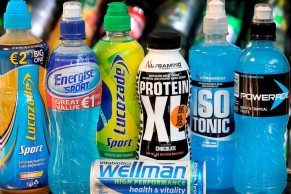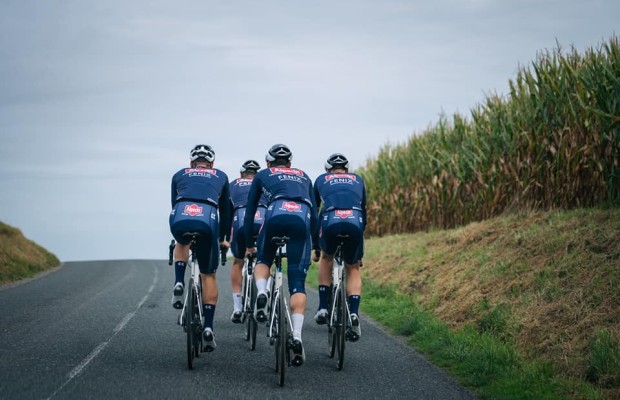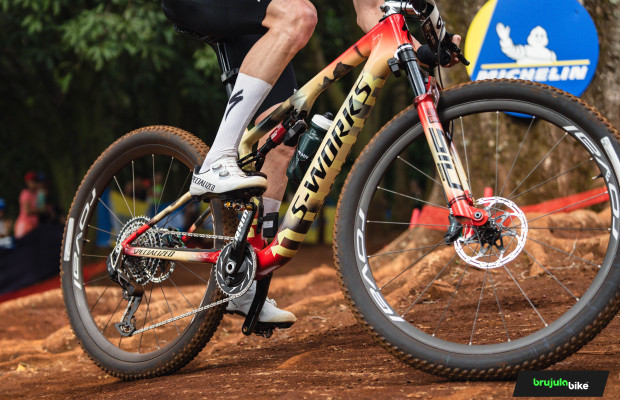Hypotonic, isotonic, and hypertonic drinks, what are they and what are they used for?
When we talk about sports drinks, we often refer to them, in many cases incorrectly, as isotonic, surely influenced by a well-known commercial brand. We explain what types of sports drinks there are and which are the most suitable for the type of effort made.

Choose the most suitable sports drink
When we do sports in general and cycling in particular, we lose fluids through perspiration. A loss that we must replenish to maintain the level of effort. The body reminds us that we must do it by activating the sensation of thirst that encourages us to drink. However, in addition to losing water, with sweat we also eliminate mineral salts since the body, to maintain proper functioning, must maintain a balance between the concentration of these in the blood and inside the cells so that they can obtain the ones they need easily, salts that, on the other hand, are essential in the transmission of nerve impulses that ultimately cause muscle contraction.
To understand the definition of each type of energy drink based on its salt concentration, it is necessary to know how the exchange of fluids and nutrients between cells and the surrounding environment works, an exchange that occurs through a phenomenon called osmosis. In a very general way, it can be explained by mentioning that the cell membrane is semipermeable. If the salt concentration in the environment is equal to the salt concentration inside the cell, the cell is said to be in an isotonic environment, a situation in which the system is in balance. If the salt concentration is higher than that of the environment, it is said to be hypotonic. In that case, the membrane will allow water to pass into the cell until the salt concentration is balanced, while, conversely, if the environment has a higher salt concentration, the cell will expel water seeking that balance, a situation called hypertonic.
RECOMENDADO

The cyclist's patience: how long, gentle training sessions build your best season

Tips for cycling in the rain

25 cycling gifts ideas to get it right

When do helmets have to be changed? Do they have an expiration date?

Some reasons to stay away from the road in winter

S-Works: what does it really mean and where does Specialized's most exclusive label come from?

With the evolution of cycling nutrition, sports drinks are one of the fields that have helped improve hydration capacity and maintain effort. Sports drinks have different formulations that provide water, mineral salts, and carbohydrates to also provide an energy supply. The concentration of these elements in the drink in relation to the concentration of salts inside the body's cells is what determines whether they are called one way or another.
When a drink is isotonic, it means that its salt concentration matches that inside the cells, making it easier for the body to absorb it and for the cells to eliminate excess salts. However, they have the limitation that, to maintain the appropriate concentration, the glycogen concentration must be between 4 and 8% of the content. In any case, they are the most common precisely because of that ease of absorption that makes them very suitable for maintaining a good energy supply and adequate hydration during exercise.

If the salt concentration of the drink is lower than that of the cells, then the drink is called hypotonic. The best example of this type of drink is simply the water with which we fill our bottles, which contains minerals but in an insufficient proportion to flow into the cell and allow the recovery of those lost through perspiration. There are also sports drinks with a hypotonic character that are characterized by a carbohydrate content of less than 4% of the content.
They are only suitable for maintaining hydration when the intensity level is not high, as well as for providing a light energy supply, for example, before the start of a test without overdoing the amount of ingested glycogen that could cause a peak of insulin that leaves us without strength in the initial part.

Finally, we have hypertonic drinks that, in recent times, have gained importance due to the importance of providing the highest possible amount of carbohydrates. In fact, the content of these nutrients in these drinks exceeds 8%, so the mission of these drinks is more about nutrition than hydration, limited by the high salt concentration making their absorption more complicated. In fact, the opposite happens since the body, which always tries to balance the salt concentration between the different media, causes the cells to release water to seek that balance, so, if they are used, it is usual to combine their intake with another bottle containing only water.